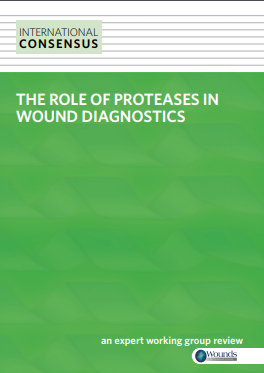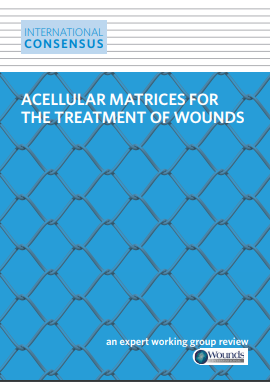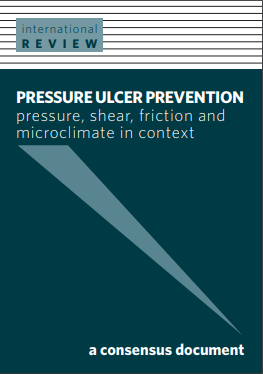Day in the life
<p>Each issue of Wounds International features a typical day in the life of a different wound care clinician from around the world. This series looks at the variety of techniques that are required in different settings and asks clinicians about the type of conditions they work in, the types of wounds they see and the […]
Advances in pressure ulcer management in Brazil
<p>This article describes the development of pressure ulcer knowledge and management in Brazil. Recent studies have shown that pressure ulcers are a significant problem in Brazil, and several local and international organisations have recognised the important role nurses play in prevention and care. As a result, nursing education and resources have improved and evaluating the […]
How to… Ten top tips: preventing pressure ulcers
<p>Pressure ulcers are defined as localised damage to the skin and/or underlying tissues usually caused by sustained pressure at the interface between bone and soft tissue. Pressure ulceration can range in severity from non-blanching erythema of intact skin (tissue redness that does not turn white when pressure is applied with a finger), to deep tissue […]
Clinical note-making and patient outcome measures using TELER®
<p>This paper describes the advances in the TELER® system of clinical note-making and patient outcome measurements, including the new digital pen and paper format. The digital pen records clinical data by reading handwriting, while Bluetooth technology transfers data from the pen as encrypted digital files and converts them to machine readable text. The text can […]
Expert Commentary on 'Advances in pressure ulcer management in Brazil'
<p>Like their Brazilian counterparts, Canadian nurses often take the lead in PU management.</p>
Management of perineal and vaginal injuries during childbirth
<p>This article examines clinical best practice, quality data and research pertaining to injuries of the perineum and vagina sustained during childbirth. Prevention is essential, however the ability to recognise anal sphincter rupture, periurethral tears and vaginal trauma is also critical to preventing serious life-altering complications. Principles of treatment are outlined, while a future research agenda […]
Assessing the bioburden in poorly healing wounds
<p>Diagnosing when a wound is critically colonised can be difficult because these wounds do not display classical signs of infection and do not have clearly elevated levels of bioburden. Recent research suggests that the critically colonised state of a wound may be more precisely described as a colonisation by polymicrobial biofilm communities. Biofilm-based wound care […]
Effective wound management and wellbeing for clinicians, organisations and industry
<p>In February 2011, a multidisciplinary group of clinicians and researchers met at the Wounds International conference in Cape Town, South Africa, ahead of a consensus meeting in Brussels in May 2011. The aim of the meeting was to explore patient wellbeing in relation to wound management. Several themes were discussed and are presented in this […]
Control of lymphatic filariasis through patient empowerment
<p>This case study highlights the challenges faced by patients with lymphatic filariasis and the success of an integrated home-based self-care programme developed at the Institute Of Applied Dermatology in Kerala, South India. This innovative treatment regimen uses integrated practice to fuse modern dermatology techniques with traditional Indian methods such as yoga and Ayurvedic medicine.</p>
The role of proteases in wound diagnostics: an international consensus

This consensus document explores the role of proteases in wound healing and the value of having an easy to use, point-of-care protease test in clinical practice. Supported by KCI – An Acelity Company
The internet is bringing us closer
<p>Suzie Calne highlights the ongoing conversation about clinicians’ roles in wound care, as discussed at the Wounds International conference and now on the online virtual conference</p>
Tackling the hidden trauma of childbirth injuries
<p>Vaginal deliveries can cause distressing injuries, writes Jacqui Fletcher. But is enough being done globally to tackle this hidden problem?</p>
Challenges of treating modern military trauma wounds
<p>The war being fought in Iraq (2003–2009) and Afghanistan (2006–present) is unconventional in that British forces are predominantly engaged in counterinsurgency tactics as part of an asymmetric war[1]. While US and coalition forces have numerous technological advantages over the enemy in terms of weapons, armour, transportation and a high level of organisation, they face unconventional […]
Advances in tissue-engineered skin substitutes
<p>Large skin defects resulting from burns, trauma, congenital giant nevi, and disease can lead to skin necrosis and represent a challenge to achieving skin coverage. This article summarises the development of tissue-engineered skin substitutes, identifies key clinical landmarks, reviews some critical aspects of cell and skin biology and highlights future developments that may foster progress […]
The challenge of managing burn wounds in Uganda
<p>With only 75 specially trained general surgeons for a population of 30 million, it is unsurprising that there are considerable challenges facing clinicians in Uganda. In this article the author describes his experiences working in the A&E department of a busy teaching hospital in Uganda’s capital Kampala. He describes the day-to-day routine of the unit […]
Management of saddle and harness sores in a pack mule
<p>Pack mules are often subject to tethering injuries and saddle sores. Prevention is the best approach to these injuries and action should be taken to ensure that the mule’s welfare is protected. Where wounds do occur, a wound management plan is required that addresses the underlying causes of any wounds and promotes wound healing.</p>
Day in the life
<p>Each issue of Wounds International features a typical day in the life of a different wound care clinician from around the world. This series looks at the variety of techniques that are required in different settings and asks clinicians about the type of conditions they work in, the types of wounds they see and the […]
Innovations in the assessment and diagnosis of wound infection
<p>This article describes the latest significant research concerning wound infection and the effect this has had on the day-to-day practice in a regional hospital in Australia. The author highlights the importance of tackling biofilms when dealing with chronic wound infection and the need to standardise swabbing techniques. The author also outlines the impact that wound […]
Treatment innovations in hypertrophic and keloid scars
<p>This article examines the latest innovations and research in the diagnosis and treatment of hypertrophic and keloid scars. It looks at the latest evidence for targeting molecular and cellular pathways as well as emphasising that speed of treatment is crucial in preventing scarring. The authors also outline the direction of future research into scarring and […]
Reducing surgical site infection in a hospital in Singapore
<p>Surgical site infection (SSI) is preventable and achieving zero SSI rates for every clean operation should be the goal of all surgeons. This paper describes one hospital’s strategy for reducing SSIs, enhancing the care of patients and promoting a culture of patient safety. All clean and clean-contaminated elective gastrointestinal and hernia operations were managed using […]
The importance of the skin barrier in managing periwound areas
<p>The skin is the largest of the body’s organs and provides an immediate barrier between the internal tissues and the environment. It protects the body from the effects of temperature and chemical and microbial attack. At the same time as preventing harmful substances from entering the body, the skin also prevents the loss of nutrients. […]
Celebrating the first Wounds International Conference
<p class="p1">Tough economic conditions across the world mean that clinicians are constantly battling economic cuts and resisting restrictions that enforce changes in everyday practice. It is very easy to reach a plateau where professional practice is safe and effective, but lacks growth and development.</p>n<p> </p>
Acellular matrices for the treatment of wounds

An international consensus document on acellular matrix products in the treatment of hard-to-heal wounds such as diabetic foot ulcers, venous leg ulcers and pressure ulcers. Currently there is no definitive paper or guideline on the use of acellular matrices in acute and chronic wounds. To begin to address this, an expert working group convened in […]
Common complications involved in body piercing
<p>As the prevalence of body piercing has increased in recent years so has the associated list of documented risks and complications. Some of the more common localised dermatologic risks include infection, hypertrophic scarring and keloid formation, and traumatic tearing. This article examines the main risks of body piercing and looks at techniques for management and […]
Technology update: Understanding Hydrofiber® Technology
<p>Modern wound care clinicians have witnessed the development of a bewildering array of new technologies, many of which have emerged as a result of the failings of previous products. One of the more successful recent advances has been the introduction of Hydrofiber® Technology. Hydrofibers are one of the most widely used modern wound care dressings […]
Wounds International goes from strength to strength
<p>The past year has been a busy one for wound education, says Suzie Calne.</p>
It is time to focus on surgical site infection
<p>Surgical site infection is both life-threatening and preventable, says Professor David Leaper. So where is all the research?</p>
Day in the life
<p>Each issue of Wounds International features a typical day in the life of a different wound care clinician from around the world. This series looks at the variety of techniques that are required in different settings and asks clinicians about the type of conditions they work in, the types of wounds they see and the […]
Using preoperative colon preparation to prevent surgical site infection
<p>Elective colon and rectal resections have the highest rates of surgical site infection (SSI) of any elective procedure in contemporary surgery. One technique that can be used to prevent SSI is preoperative preparation of the colon. This article examines the efficacy of this procedure as well as providing tips for best practice. The author also […]
Managing the lower limb in coronary artery bypass grafting
<p>Coronary artery bypass grafting (CABG) is often used to treat patients with heart disease. However depending on the number of coronary vessels to be bypassed, veins may be harvested from both legs leaving difficult-to-manage wounds. This article examines how one trust’s programme for managing the lower limb following CABG helped to prevent surgical site infection […]
Draining postoperative abdominal abscesses through a trocar
<p>Abdominal abscesses that develop as a result of surgery can cause deep space surgical site infection (SSI). These abscesses are usually drained by percutaneous abscess drainage (PAD), however the draining tube can become blocked by necrotic tissue and blood coagulates. Similarly, sump drainage requires a laparotomy for placement. This short report details how the authors […]
Combating wound infection with documentation and antiseptic sutures
<p>Preventing surgical site infection (SSI) has always been a difficult task. For example, the development of infection in incisional wounds is the most common complication in open and laparoscopic surgery. This short paper provides an overview of developments in the prevention of postoperative wound infections and explains why surgeons should place greater emphasis on the […]
Avoiding pressure damage when using ventilators
<p>Noninvasive positive pressure ventilators (NIPPV) require the use of nasal or facial masks. Due to the need for these masks to tightly adhere to prevent air leaks, they can cause facial pressure ulcers. The author developed an innovative method to reduce the incidence of ulcers by replacing the hydrocolloid dressings that were used as a […]
Managing a patient with giant condylomata acuminata
<p>This report focuses on a 55-year-old man of Afro-Caribbean origin who presented to a tertiary teaching hospital with a 30-year history of progressively enlarging lesions in his groin. The presence of the lesions was affecting his physical, sexual, social and emotional well-being. Surgical excision was performed and a histopathological diagnosis of giant cell condylomata was […]
Product focus: Biophysical properties of a Hydrofiber® cover dressing
<p>Aims: Good exudate management needs to be maximised for both the wound and the patient to ensure wound healing can take place in a timely manner. The in vitro studies in this article evaluate a new Hydrofiber® cover dressing (HCD) for both its exudate management and biophysical properties (eg cellular adhesion and contouring to uneven […]
Product focus: Reduced cellular toxicity and clinical performance of Atrauman® Ag
<p>There is currently a wide range of silver-containing dressings available for the treatment of critically colonised and infected wounds. As released silver ions are known to be cytotoxic to human cells, the ideal antimicrobial dressing should balance sustained antimicrobial activity against cytotoxicity. It will also have other desirable features such as minimising trauma on application […]
Neueste Technologische Erkenntnisse. Die Bedeutung von PHMB verstehen: ein lokaltherapeutischer Ansatz gegen Wundinfektionen
Die Praxis der Wundreinigung ist zum Grundprinzip der modernen Wundversorgung geworden, wo es einen Teil des Prozesses der Wundbettvorbereitung bildet. Reinigung, Wundtoilette, und Desinfektion helfen, die Belastung mit Bakterien in der Wunde zu reduzieren und Gewebstrümmer und Exsudat zu entfernen, um das Wundbett für den Verschluss vorzubereiten. In diesem Artikel geht es um die Verwendung […]
International Review: Pressure ulcer prevention: pressure, shear, friction and microclimate in context

This document looks at pressure, shear, friction and microclimate with the aim of building understanding of each extrinsic factor. The concepts involved in understanding pressure, shear, friction and microclimate and their synergistic actions in the formation of pressure ulcers are complex. As a result, the expert working group involved in producing Pressure ulcer prevention: prevalence […]
Diagnostics can lead us into the future
<p>Suzie Calne looks at the latest developments in wound diagnostics and outlines the article focus for this issue.</p>
The treatment of skin problems in Saudi Arabia
<p>In this guest editorial, Muhammad Shahid Yousuf discusses the disparities in health provision in the Middle East.</p>
Day in the life
<p>Each issue of Wounds International features a typical day in the life of a different wound care clinician from around the world. This series looks at the variety of techniques that are required in different settings and asks clinicians about the type of conditions they work in, the types of wounds they see and the […]
Innovations in care of the skin surrounding pressure ulcers
<p>When attempting to manage a pressure ulcer it is easy to focus attention on the wound while overlooking the periwound area. However, although managing vulnerable periwound skin presents the clinician with a set of unique challenges, effective treatment can prevent unnecessary skin breakdown. This article examines management techniques, including pressure relief, the use of barrier […]
Treating surgical wounds in rural south western Uganda
<p>Health services in developing countries often experience difficulties with limited supplies of equipment, understaffing and overcrowding. This hospital featured in this article demonstrates the problems faced by clinicians working in rural Uganda, where extreme poverty and a lack of funding mean that treating patients’ wounds can be a unique challenge.</p>
Managing eczema in patients with leg ulcers
<p>Patients with leg ulcers will also often experience skin problems such as eczema. It is important that clinicians are able to offer comprehensive skin assessment, accurate diagnosis and effective management. This article outlines the background to the development of eczema in the lower limb and offers useful practice points for clinicians.</p>
Preventing skin breakdown in lymphoedema
<p>Lymphoedema following breast cancer treatment is characterised by an accumulation of lymph fluid in the affected limb, leading to abnormal swelling. Meticulous daily skin care forms an integral part of lymphoedema risk reduction and also prevents skin breakdown. This article examines an innovative skin care programme that aims to improve the condition of patients’ skin […]
Managing childhood eczema in the Middle East
<p>This case study describes the management of an 11-year-old boy living in the desert of Saudi Arabia who was diagnosed with severe eczema. The traditional therapy used by a local physician to treat this common disease had negatively affected his management. Recommendations are made to improve the future treatment of skin conditions in rural areas […]
Technology update: Understanding film dressings
<p>Film dressings provide a simple and effective method of creating a moist wound environment and promoting healing in shallow wounds. They are indicated for the management of minor burns and simple wounds and their flexibility also means that they can be used to cover sutures following surgery. This article examines the main innovations in film […]
Product focus: Hydrofiber® Technology: its role in exudate management
<p>Matching dressing properties to wound requirements is a fundamental part of any good protocol of care, but the mechanics of exudate handling are complex and many factors need to be considered. This paper introduces these factors, giving examples of their effects in conjunction with dressing products and materials. It discusses one modern material (Hydrofiber® Technology) […]
Product focus: Dressing conformability and silver-containing wound dressings
<p>Background: All wounds have unique and irregular topographies, including cavities where fluids and bacteria may collect and increase the risk of wound infection. Aims: To qualitatively and quantitatively investigate the relationship between the physical structure of antiseptic wound dressings and their ability to manage bioburden in models that simulate clinical conditions.</p>
Technology update: The role of PHMB in delayed wound healing
<p>Infection is a significant factor in delayed wound healing and clinicians have sought to define levels of wound infection in order to prevent confusion and the misuse of antibiotics. Recently there has been renewed interest in antiseptics. PHMB is a multi-modal antiseptic that has been shown to be useful in reducing colonisation in both acute […]


